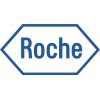Mircera injection presents for methoxy polyethyl¬ene glycol-epoetin beta. It is the first molecule of a new class of continuous erythropoietin receptor activators. The active substance, methoxy poly¬ethylene glycol-epoetin beta, is a covalent conju¬gate of a protein produced by recombinant DNA technology in Chinese hamster ovarian cells and a linear methoxy-polyethylene glycol (PEG).
This results in an approximate molecular weight of 60kda. The dosage strength in mg indicates the quantity of the protein moiety of the methoxy polyethylene glycol-epoetin beta molecule without consideration of the glycosylation.
The injections are supplied as a sterile solution, ready to use in single dose pre-filled syringes- 50mcg/0.3ml, 75mcg/0.3ml, 100mcg/0.3ml & 120mcg/0.3ml.
Mode of action: Mircera stimulates erythro- poiesis by interaction with the erythropoietin receptor on progenitor cells in the bone marrow. As primary growth factor for erythroid develop¬ment, the natural hormone erythropoietin is pro¬duced in the kidney and released into the blood stream in response to hypoxia. In responding to hypoxia, the natural hormone erythropoietin interacts with erythroid progenitor cells to increase red cell production.
Ind: Mircera is indicated for the treatment of anemia associated with chronic kidney disease (CKD) including patients on dialysis and patients not on dialysis.
C/I: Patients with uncontrolled hypertension and known hypersensitivity to the active substance or any of the excipients.
S/E: Approximately 6% of patients treated with Mircera are expected to experience adverse reactions. The most frequent reported adverse reaction is hypertension.
Warnings & Precautions: Supplementary iron therapy is recommended for all patients with serum ferritin values below 100mg/l or whose transferrin saturation is bellow 20%. To ensure effective erythropoiesis, iron status should be evaluated for all patients prior to and during treatment.
Pregnancy & lactation: There are no adequate data on the use of Mircera in pregnant woman. Animal studies do not indicated direct harmful effects. However, caution should be exercised when prescribing to pregnant women.
It is also unknown whether methoxy polyethylene glycol-epoetin beta is excreted in human breast milk. But, one animal study has shown excretion of this drug in the maternal milk. Therefore, decision on Mircera therapy should be made taking into account the benefit of breast-feeding to the child and the benefit of Mircera therapy to the woman.
Dosage & Admin: Mircera is administered less frequently than other erythropoiesis stimulat¬ing agents (ESAs) due to the longer elimina¬tion half-life. Treatment with Mircera has to be initiated under the supervision of a health care professional.
Mircera can be administered subcutaneously (s.c) or intravenously (i.v) according to clinical preference. Mircera can be injected subcuta¬neously in the abdomen, arm or thigh, all three sites are equally suitable. It is recommended that hemoglobin is monitored every two weeks until stabilized & periodically there after.
Treatment of patients not currently treated with an erythropoiesis stimulating agent (ESA): The recommended starting dose is 0.6mcg/kg body weight, administered once every two weeks as an intravenous or subcutaneous injection in order to increase the hemoglobin to greater than llgm/dl (6.83mmol/l).
The dose of Mircera may be increased by approximately 25 to 50% mmol/1) over a month. Further increases of approximately 25 to 50%. If the haemoglobin level exceeds 13gm/dl & then restarted with approximately 50% of the previously administered dose.
After dose interruption a hemoglobin decrease of approximately 0.35gm/dl per week is expected. Dose adjustment should not be made more often than once a month.
Patients currently treated with an erythropoiesis stimulating agent (ESA): In this case, treatment can be converted to Mircera administered once a month or, if desired, once every two weeks as a single i.v or s.c injection. The starting dose of Mircera is based on the calculated previously given weekly dose of epoetin at the time of substitution. The first injection of Mircera should be administered at the next scheduled dose of the previously administered epoetin.
Missed dose: If one dose of Mircera is missed, the missed dose should be administered as soon as possible and administration of Mircera is to be restarted at the prescribed dosing frequency.
Treatment interruption: Treatment with Mircera is normally long-term. However, it can be interrupted at any time, if necessary. Pediatric use: Mircera is not recommended for use in patients aged less than 18 years due to a lack of data on safety and efficacy.
Drug inter: No interaction studies have been performed. The clinical results do not indicated any interaction of Mircera with other medicinal products.
Prices:
50mcg (0.3ml) pre-filled syringe x 1’s pack: 6950.0 TP
-
Your shopping cart is empty!

